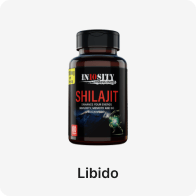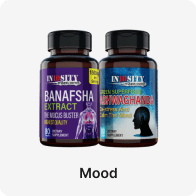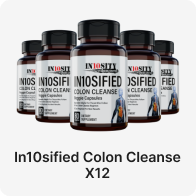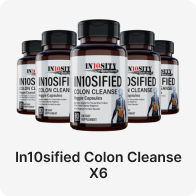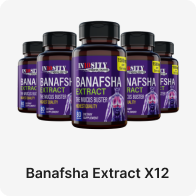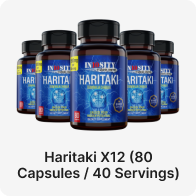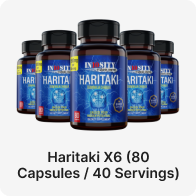How Long Should A Power Nap Be?
Do you feel like you are constantly running on low energy? Are you struggling to stay focused during the day? If so, it might be time to start taking power naps. A power nap is a short nap, especially in the early afternoon, that can help rejuvenate your body and mind during the day.
This article will discuss what a power nap is and how long it should last. We will also provide some tips for having a good power nap. Finally, we will explain the benefits of taking regular power naps.

Power naps are short bursts of sleep that last anywhere from 10 to 30 minutes. They are different from regular naps because they are taken during the day and are meant to improve your energy levels and focus.
A power nap or cat nap is also defined as a short sleep that terminates before the occurrence of deep sleep (slow-wave sleep). Power naps provide physiological rest, refreshment, and rejuvenation to reactivate and boost the body for further work.
Many often confuse power naps with regular naps. While both involve sleeping, there are some critical differences between the two.
First, power naps are shorter than regular naps. They usually last between 10 and 30 minutes, while regular naps can last anywhere from 30 minutes to an hour or more.
Second, power naps are taken during the day instead of at night. This is because they are meant to improve your energy levels and focus. Regular naps, on the other hand, are usually taken before nighttime sleep as a way to improve your sleep quality.
Finally, power naps are more effective than regular naps at improving your alertness and cognitive function. This is because power naps allow you to enter into the shallow stages of sleep, which are more refreshing than the deep stages of sleep.
Napping has several benefits that can improve your overall health and well-being. Some of the benefits of napping include:
Napping can help improve your mood A study conducted by two MIT economists found that people who took a 30-minute nap during the day had lower levels of anxiety than those who did not take a nap. The study also found that people who took a power nap were more likely to report feeling happy and satisfied with their lives than those who didn't take power naps.
A daytime nap can help reduce the stress levels that people experience throughout the day. This is because napping can help lower cortisol levels, the stress hormone, in the body.
A power nap can also help to reduce fatigue by providing a short burst of energy. This is especially beneficial for people with jobs requiring long hours or night shifts.
Power naps can help improve your cognitive function by providing a break for your brain to rest and rejuvenate. Studies have shown that napping can help improve memory, reaction time, and creative thinking.
These are just a few of the benefits of having a quick nap. In addition to these benefits, napping can also help improve your cardiovascular health, increase productivity, and even boost your immune system.
There are different types of naps that you can take, depending on your sleep cycle. The three most common types of power naps are:
Replacement naps are daytime naps usually taken in the morning after you wake up and can last for 30 minutes to an hour. These brief naps offer restorative benefits for those who missed a good night's rest and their full sleep cycle.
Prophylactic naps are short naps taken before a night shift or long hours of work. Shift workers usually take these naps to ensure they are not sleep deprived when they stay awake and work long into the night. Prophylactic naps can also improve your alertness and performance by giving the benefits of the healthy sleep and correct sleep deprivation or disorders.
Appetitive naps are pleasure naps taken just for the sake of napping. These naps are usually taken in the afternoon when you start to feel sleepy. Appetitive naps can last for 10 to 20 minutes and help improve your mood and focus.
Now that we know what a power nap is and the benefits of taking one, you might be wondering how long your power nap should be. The honest answer is that your nap length depends on your sleep cycle and what you're trying to achieve with your power nap.
However, since power naps are naturally short, most sleep experts recommend keeping your nap to 20 minutes or less. This is because napping for more than 20 minutes can lead to sleep inertia, which is the groggy feeling you experience when you wake up from a deep sleep.
Sleep inertia can make you feel even more tired than before you took your power nap, so it's best to keep your nap short and sweet. If you're looking for a quick energy boost, aim for a 10 to 20-minute power nap. If you have more time to spare, try a 30 minute nap. Just be sure to nap for less than an hour, as this can reduce your sleep cycle for the rest of the day.
One of the most common questions people have about power naps is whether or not they will have trouble sleeping after a nap. The "Adenosine Hypothesis of Sleep" research suggests that napping can help to reduce the levels of adenosine, a chemical that makes you feel sleepy, in the brain.
This theory suggests that you can reduce your need for sleep at night by taking a power nap during the day. However, there is no scientific evidence to support this theory. In fact, most sleep experts believe that napping during the day can help you sleep better at night.
So, if you're worried about how power naps might affect your nightly sleep, don't be! Napping during the day helps you fall asleep quicker and get a good night's sleep.

Here are a few tips to help you get the most out of your nap:
To have a good midday nap, it's essential to find a quiet place to sleep. This means finding a place where you can relax and won't be interrupted by noise or other distractions. If you can, try to find a dark and cool place to nap, as this will help your body relax even further.
When it comes to napping, timing is everything. You don't want to nap for too long and risk sleep inertia, but you also don't want to wake up feeling groggy. The best way to avoid this is to set the alarm for 30 minutes or less. This will ensure you get the most restful sleep possible without risking sleep inertia.
To have a good power nap, comfort is vital. This means finding a position that is comfortable for you and won't cause you to wake up feeling stiff. Many people find that lying down on their back with their legs slightly elevated is the best position for falling asleep quickly.
In conclusion, power naps are healthy and beneficial for your mind and body. If you're looking for a quick energy boost, aim for a 10 to 20-minute power nap. If you have more time to spare, you can try a 30 to 60-minute nap. Just be sure to take a power nap for only an hour because a deeper sleep can disrupt your sleep cycles.
This article will discuss what a power nap is and how long it should last. We will also provide some tips for having a good power nap. Finally, we will explain the benefits of taking regular power naps.
What Is A Power Nap?

Power naps are short bursts of sleep that last anywhere from 10 to 30 minutes. They are different from regular naps because they are taken during the day and are meant to improve your energy levels and focus.
A power nap or cat nap is also defined as a short sleep that terminates before the occurrence of deep sleep (slow-wave sleep). Power naps provide physiological rest, refreshment, and rejuvenation to reactivate and boost the body for further work.
Power Naps Vs. Regular Naps
Many often confuse power naps with regular naps. While both involve sleeping, there are some critical differences between the two.
First, power naps are shorter than regular naps. They usually last between 10 and 30 minutes, while regular naps can last anywhere from 30 minutes to an hour or more.
Second, power naps are taken during the day instead of at night. This is because they are meant to improve your energy levels and focus. Regular naps, on the other hand, are usually taken before nighttime sleep as a way to improve your sleep quality.
Finally, power naps are more effective than regular naps at improving your alertness and cognitive function. This is because power naps allow you to enter into the shallow stages of sleep, which are more refreshing than the deep stages of sleep.
Health Benefits Of Napping
Napping has several benefits that can improve your overall health and well-being. Some of the benefits of napping include:
Increase Alertness and Mood
Napping can help improve your mood A study conducted by two MIT economists found that people who took a 30-minute nap during the day had lower levels of anxiety than those who did not take a nap. The study also found that people who took a power nap were more likely to report feeling happy and satisfied with their lives than those who didn't take power naps.
Reduced Stress Levels
A daytime nap can help reduce the stress levels that people experience throughout the day. This is because napping can help lower cortisol levels, the stress hormone, in the body.
Reduced Fatigue
A power nap can also help to reduce fatigue by providing a short burst of energy. This is especially beneficial for people with jobs requiring long hours or night shifts.
Better Cognitive Function
Power naps can help improve your cognitive function by providing a break for your brain to rest and rejuvenate. Studies have shown that napping can help improve memory, reaction time, and creative thinking.
These are just a few of the benefits of having a quick nap. In addition to these benefits, napping can also help improve your cardiovascular health, increase productivity, and even boost your immune system.
Other Types Of Naps
There are different types of naps that you can take, depending on your sleep cycle. The three most common types of power naps are:
Replacement Naps
Replacement naps are daytime naps usually taken in the morning after you wake up and can last for 30 minutes to an hour. These brief naps offer restorative benefits for those who missed a good night's rest and their full sleep cycle.
Prophylactic Naps
Prophylactic naps are short naps taken before a night shift or long hours of work. Shift workers usually take these naps to ensure they are not sleep deprived when they stay awake and work long into the night. Prophylactic naps can also improve your alertness and performance by giving the benefits of the healthy sleep and correct sleep deprivation or disorders.
Appetitive Naps
Appetitive naps are pleasure naps taken just for the sake of napping. These naps are usually taken in the afternoon when you start to feel sleepy. Appetitive naps can last for 10 to 20 minutes and help improve your mood and focus.
How Long Should A Power Nap Be?
Now that we know what a power nap is and the benefits of taking one, you might be wondering how long your power nap should be. The honest answer is that your nap length depends on your sleep cycle and what you're trying to achieve with your power nap.
However, since power naps are naturally short, most sleep experts recommend keeping your nap to 20 minutes or less. This is because napping for more than 20 minutes can lead to sleep inertia, which is the groggy feeling you experience when you wake up from a deep sleep.
Sleep inertia can make you feel even more tired than before you took your power nap, so it's best to keep your nap short and sweet. If you're looking for a quick energy boost, aim for a 10 to 20-minute power nap. If you have more time to spare, try a 30 minute nap. Just be sure to nap for less than an hour, as this can reduce your sleep cycle for the rest of the day.
Do Power Naps Affect My Nightly Sleep?
One of the most common questions people have about power naps is whether or not they will have trouble sleeping after a nap. The "Adenosine Hypothesis of Sleep" research suggests that napping can help to reduce the levels of adenosine, a chemical that makes you feel sleepy, in the brain.
This theory suggests that you can reduce your need for sleep at night by taking a power nap during the day. However, there is no scientific evidence to support this theory. In fact, most sleep experts believe that napping during the day can help you sleep better at night.
So, if you're worried about how power naps might affect your nightly sleep, don't be! Napping during the day helps you fall asleep quicker and get a good night's sleep.
The Best Tips For Having A Good Power Nap

Here are a few tips to help you get the most out of your nap:
Find A Quiet Place To Nap
To have a good midday nap, it's essential to find a quiet place to sleep. This means finding a place where you can relax and won't be interrupted by noise or other distractions. If you can, try to find a dark and cool place to nap, as this will help your body relax even further.
Set An Alarm Clock
When it comes to napping, timing is everything. You don't want to nap for too long and risk sleep inertia, but you also don't want to wake up feeling groggy. The best way to avoid this is to set the alarm for 30 minutes or less. This will ensure you get the most restful sleep possible without risking sleep inertia.
Get Comfortable
To have a good power nap, comfort is vital. This means finding a position that is comfortable for you and won't cause you to wake up feeling stiff. Many people find that lying down on their back with their legs slightly elevated is the best position for falling asleep quickly.
Final Thoughts
In conclusion, power naps are healthy and beneficial for your mind and body. If you're looking for a quick energy boost, aim for a 10 to 20-minute power nap. If you have more time to spare, you can try a 30 to 60-minute nap. Just be sure to take a power nap for only an hour because a deeper sleep can disrupt your sleep cycles.













